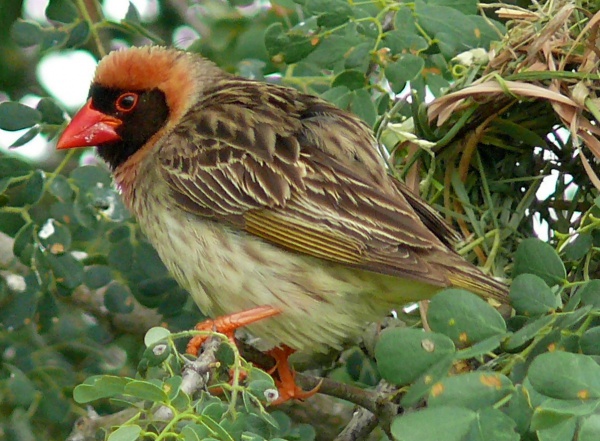Facts About Red-billed quelea
The red-billed quelea is a small migratory bird native to Sub-Saharan Africa and a member of the weaver family. Originally described by Linnaeus in 1758, it was later classified under the genus Quelea. There are three subspecies of this bird, each with distinct geographical ranges and plumage variations. Renowned for forming massive colonies and exhibiting unique breeding displays, red-billed queleas primarily consume grass seeds. However, their tendency to devastate cereal crops has earned them the nickname "Africa's feathered locust."
The bird's taxonomic history begins with Linnaeus, with subsequent refinements by other naturalists. Red-billed queleas are widespread throughout Sub-Saharan Africa, favoring semi-arid grasslands while avoiding forests. They undertake seasonal migrations in search of optimal feeding grounds. Their breeding colonies can be enormous, sometimes comprising millions of nests constructed in thorny trees or reeds. The breeding cycle is brief, with nests built rapidly.
One of the most captivating aspects of red-billed queleas is their feeding behavior. They move in large flocks, creating a rolling, cloud-like formation as they forage for seeds. These birds face various predators, including birds of prey and reptiles. Humans have interacted with them through traditional hunting methods and by utilizing their guano as fertilizer. Bird enthusiasts also keep them in aviculture.
Given their status as agricultural pests, various measures have been implemented to control their populations, such as using avicides and fire-bombs. Despite being considered pests, the red-billed quelea is listed as "Least Concern" on the IUCN Red List due to its vast distribution and large population.

 Mozambique
Mozambique